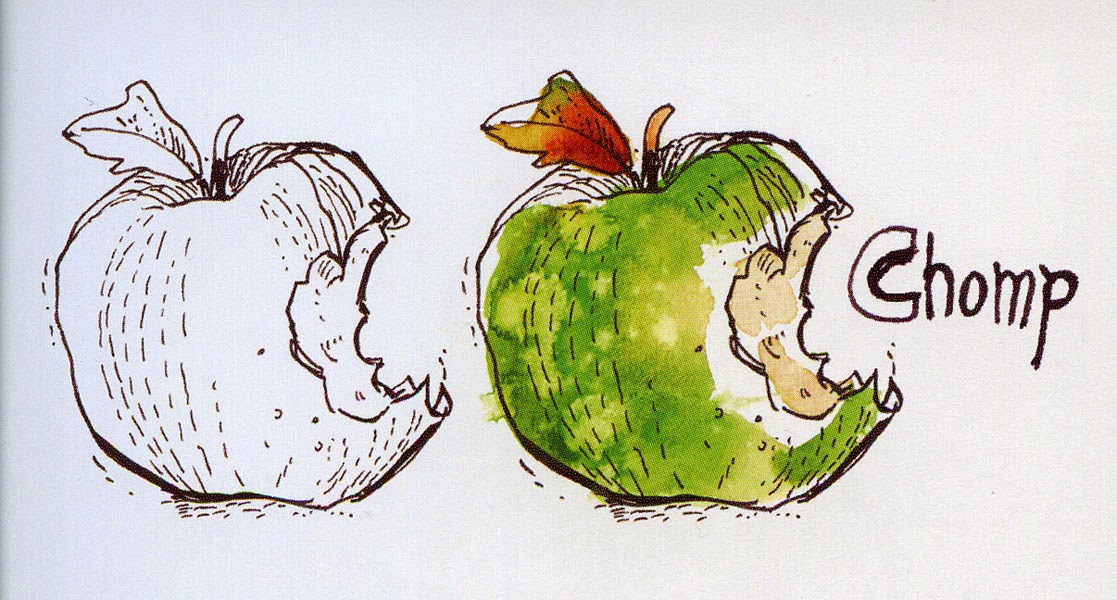Any book with the words “urban sketching” in the title
catches my eye, and this one by Felix Scheinberger was no exception: Urban Watercolor Sketching – a Guide to Drawing, Painting and Storytelling in Color.
Translated from the German, the book is filled with the author’s watercolor
illustrations (such as of suggested art materials) and many colorful examples
of his whimsical work. The examples are not strictly about urban sketching (as
in the manifesto), though, and the original title, Wasserfarbe für Gestalter, translates to “Watercolor for
Designers,” so the English-language title may have been a marketing ploy to
glom onto the current popularity of urban sketching.
Still, I think it’s an appropriate title because the author
clearly expresses an urban sketcher’s attitude: “Paint what’s around you –
things that you can easily reference. Artists ought to be authentic and tell
something about their world.” He points out that of all the painting media, watercolor
is uniquely suited for sketching on location: “Watercolor can go anywhere. It
is an autonomous, free and creative medium. It makes the world our studio.”
If you are looking for a step-by-step, how-to approach to
watercolor technique, you will not find it here. Scheinberger’s lively,
informative book is more about expression and using the unique features of the watercolor
medium to find that expression. An ancient Chinese parable that he relates at
the beginning of the book sets the tone for using watercolor: Learn a few
techniques that require much time and practice to fine-tune.
I’ve read numerous books on watercolor technique, and I think
this is the first I’ve seen that spends several pages on the medium itself – its
ancient roots, how it is made, why some pigments are more expensive than others
– and provides this potentially dry and technical information with an irreverent,
entertaining tone. (Kudos to translator Faith Ann Gibson for capturing the
author’s intended voice.) Scheinberger knows his stuff, and he conveys it
without sounding like he’s giving us a lecture.
Unlike most watercolor books that assume that the reader has
taken for granted the use of color, Scheinberger takes time to tell and show how
the addition of color to a line drawing gives it life:
“A drawing – and even more so a sketch done in pen or pencil
– conveys something that is hard to grasp, something that seems indefinite.
When color is added, in a manner of speaking, we enter the ‘real world.’ . . . Color
is demanding and enriches our pictures with a sensual aspect. A drawing of a
cake merely describes its shape, but a painting of a cake makes it
mouthwatering.”
As far as watercolor technique goes, Scheinberger believes
that by combining only two basic techniques – glazing (one or more transparent layers
applied after the previous layer is dry) and wash – you can achieve nearly any
effect. While glazing offers more control, letting colors mix serendipitously
in washes allows the uniquely luminous properties of watercolor to shine. The
two together enable you to apply a degree of control to what is a “willful and
anarchical” medium. “If we sacrifice the right amount of control in the
artistic process, watercolor’s inherent qualities begin to work to our
advantage.”
 |
| Sketch by Felix Scheinberger in his book, Urban Watercolor Sketching |
While most of the watercolor techniques he describes were
familiar to me, one was not! We’ve probably all heard about sprinkling salt
onto wet paint to get interesting mottled effects, right? But did you know you
can get a similar mottled effect with saliva?
(Not quite as easy to apply with accuracy, but certainly more readily
available!)
Especially enlightening to me was seeing Scheinberger’s
examples of color used to unify a composition and using spots of color
judiciously to bring the eye to the focal point – “less is more.” I read a
public library copy of this book, but I may decide to buy a copy, if only to
enjoy Scheinberger’s expressive, mood-infused sketches again and again.
(This review also appears on Amazon.com.)
(This review also appears on Amazon.com.)


No comments:
Post a Comment